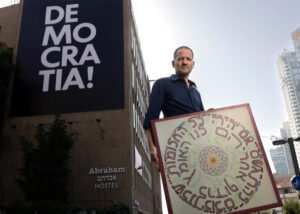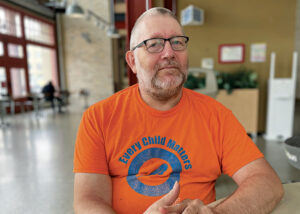In the year 2000, world leaders set themselves a deadline for dramatically decreasing global poverty. That deadline was 2015.
The global betterment plan was contained in the Millennium Development Goals (MDG), which committed the international community to: eradicate extreme hunger and poverty; provide universal primary education; promote gender equality; reduce child mortality; “ensure environmental sustainability;” and other measures. The plan also inspired a number of “Make Poverty History” campaigns which sprang up in Canada and elsewhere in 2005.
The Make Poverty History slogan, which always stretched the tension between optimism and impossibility, has inevitably lost its punch. We haven't made poverty history. But have we made progress as a human collective in caring for the least of these? And how does Canada compare to other countries?
The UN, which serves as the designated scorekeeper for MDG progress, said in its recently released final report that the goals have “produced the most successful anti-poverty movement in history.” According to the UN website, the number of people living in extreme poverty (less than $1.25 a day) has declined by half, from about 1.7 billion in 2000 to an estimated 836 million now. Stated another way, nearly a billion people have been “lifted out of extreme poverty.”
The report also says there have been major gains in gender equity in schooling as well as in child and maternal mortality, both of which are reportedly about half of what they used to be.
The report acknowledges gaps, particularly in countries experiencing conflict and with respect to environmental factors which significantly affect poverty. Global carbon dioxide emissions have increased by more than 50 percent since 1990 and 40 percent of humanity faces water scarcity, a number that is expected to rise.
The Organization for Economic Cooperation and Development reports that the official development assistance from its member countries—34 of the richest nations, excluding Russia, China, India and Brazil—has increased by 66 percent since 2000. That said, less than a third of the US$135 billion spent last year went to the poorest countries. (These figures do not include contributions by individuals to aid organizations, only government funding.)
Another troubling stat is that only five OECD countries have met the target of foreign aid being 0.7 percent of Gross National Income, a goal first set by world leaders in 1970. The five are the U.K., Denmark, Norway, Luxemburg and Sweden.
Canada is not among them. Not even close. We sit at 0.24 percent, with spending down from US$4.4 billion in 2013 to US$4.2 billion last year. The OECD report flags Canada as one of the countries with the biggest proportional decrease in development assistance. On average, OECD countries gave 0.5 percent less in 2014 compared to the year before.
Of course, dollars, even if they were abundant, won't solve everything. You can't buy peace, accountable governance or cooler global temperatures.
While the world has taken important steps to address poverty, income disparity is a growing concern among economists and thinkers.
Last year, Forbes magazine reported that there are 1,645 billionaires in the world, collectively worth US$6.4 trillion. The 2014 Credit Suisse Global Wealth Report, which looks at household wealth, estimated that 1 percent of the global population owns 44 percent of the world's wealth. Eight percent of adults are worth more than $US 100,000 while an estimated 3.3 billion people—over 70% of adults worldwide—are worth less than $10,000. The report says global household wealth doubled between 2000 and 2015.
The OECD which says income inequality threatens social cohesion, notes that in its member states, the richest 10 percent make almost 10 times that of the poorest 10 percent. That is an historic high and the trend is expected to continue. The economic growth of recent decades has essentially bypassed 40 percent of the population.
The rise in prominence of the notion of philanthropy has obscured the problem of income inequality by presenting the extremely wealthy as the saviours of the poor. Few ask whether the philanthropists obtained their wealth on the backs of the poor or whether a more equitable distribution of opportunity would be a more dignified and effective means to address poverty.
The current global trends are toward more overall wealth, greater inequality, fewer people in extreme poverty and continued increases in greenhouse gas emissions. The notion of endless economic growth continues to be the defining economic and political dogma worldwide.
While UN Secretary General Ban Ki-moon recently said that “extreme poverty can be eradicated within one more generation,” humanity will have to do some soul searching in order to make that happen.
After this story went to print a spokesperson for Foreign Affairs, Trade and Development Canada replied to Canadian Mennonite's request for comment. Below are the questions and responses:
QUESTION 1
I would appreciate your response to the following excerpt of an April 2015 release from the Canadian Council for International Cooperation:
“Budget 2015 contains no announcement to improve Canada’s performance in aid spending. With no planned increases to international assistance, Canada remains at the back of the pack in terms of its relative contribution to a more secure and prosperous world – currently sitting in 16th place out of 28 donor countries. . ..”
“Canada’s international reputation has suffered in recent years as Canada’s contribution to aid spending, as a percentage of Gross National Income (GNI), has fallen steadily from 0.34% to 0.24% –a far cry from the United Nations’ target of 0.7% of GNI.”
RESPONSE
Budget 2015 reaffirmed that the Government is focused on addressing key international development challenges, and ensuring that Canada’s international assistance efforts are aligned with broader priorities and lead to concrete results for the world’s poorest.
Canada will continue to provide assistance to developing countries in key areas such as maternal, newborn and child health, education, food security and public sector governance and justice reform.
But critical financing gaps remain in developing countries that ODA [Official Development Assistance] cannot finance alone. This is why Canada is enhancing its efforts to partner with the private sector, especially in areas that blend public and private resources to mobilize additional investment into developing countries to reduce poverty.
As announced in Budget 2015, the establishment of the Development Finance Initiative will enhance Canada’s development finance toolkit and increase our efforts to reduce poverty globally.
Canada’s commitment to helping people who live in poverty and responding to humanitarian crises is strong.
We are doing so in a way that’s transparent and accountable to Canadians while achieving real results for those in need.
Canadians can be proud of Canada’s official development assistance.
Canada pays what it pledges, we meet our commitments and we are helping save the lives of millions of mothers and children around the world.
QUESTION 2
Can you please provide a record of what Canada has pledged and delivered with respect to aid related to the Syrian crisis.
RESPONSE
Canada has been at the forefront of the international response to the crisis. We will remain at the forefront.
Thanks to Canada’s support, our partners are responding to numerous humanitarian needs. They are providing drinking water to 16M people and food assistance to 4.1M Syrians inside the country, as well as emergency assistance to 3.25M refugees in neighbouring countries.
To date, Canada has committed more than $700 million in humanitarian, development and security assistance in response to the Syrian crisis. Of this amount, more than $567 million has been disbursed. For more information, you may consult the Canada's response to the situation in Syria page on the DFATD website.







Leave a Reply
You must be logged in to post a comment.